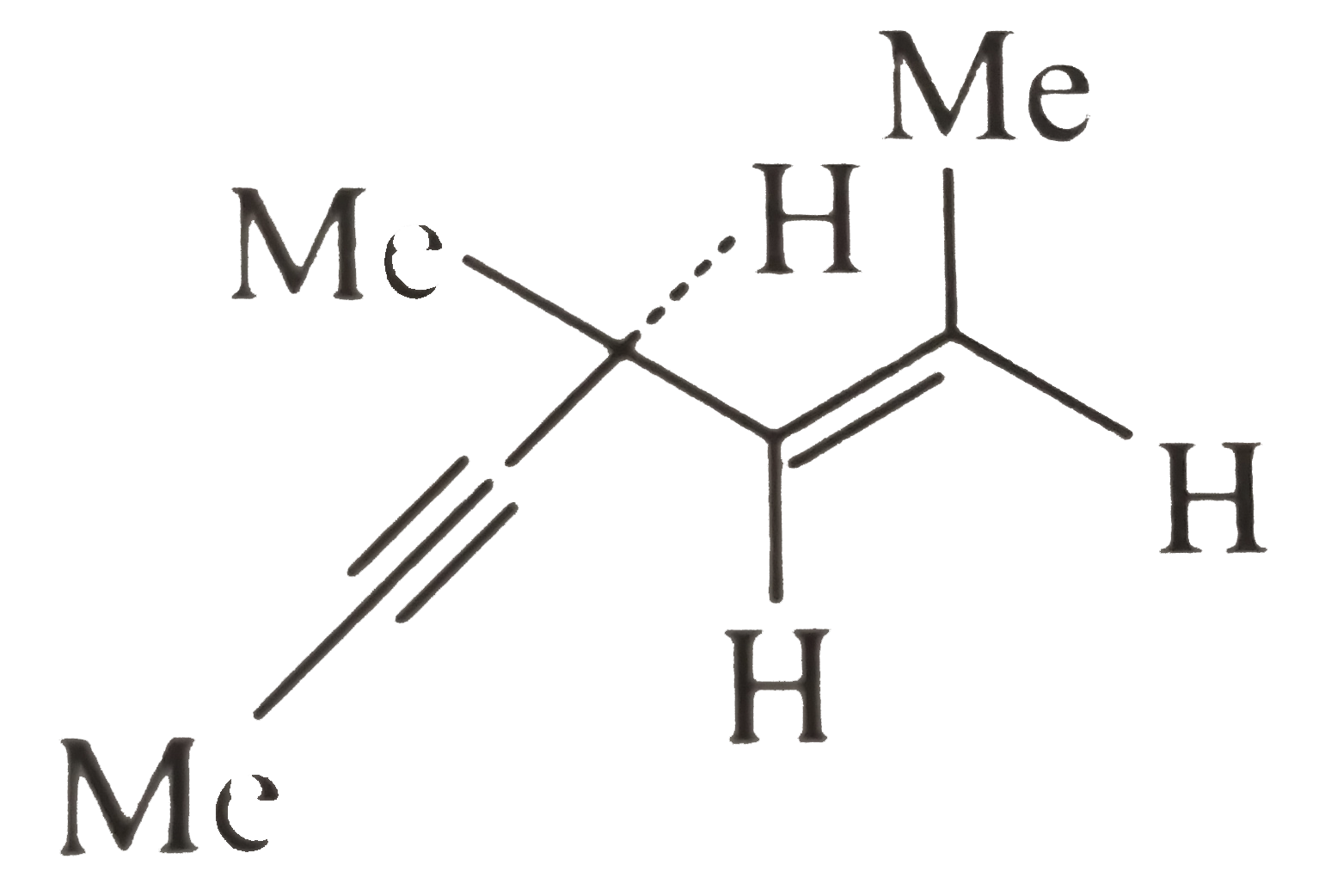Oils on treating with hydrogen in the presence of palladium or nickel catalyst from fats. This is an example of
addition reaction
substitution reaction
displacement reaction
oxidation reaction
The correct Answer is:A
To solve the question, we need to understand the process described and identify the type of reaction taking place when oils are treated with hydrogen in the presence of a catalyst.
1. Identify the Nature of Oils:
- Oils are primarily composed of unsaturated fatty acids, which means they contain one or more double bonds between carbon atoms.
2. Understanding Hydrogenation:
- When oils (unsaturated fats) are treated with hydrogen gas (H₂) in the presence of a catalyst like palladium or nickel, a chemical reaction occurs. This process is known as hydrogenation.
3. Reaction Mechanism:
- During hydrogenation, the double bonds in the unsaturated fatty acids react with hydrogen. This results in the addition of hydrogen atoms across the double bonds, converting them into single bonds.
4. Formation of Saturated Fats:
- As a result of this reaction, the unsaturated fats (oils) are transformed into saturated fats. Saturated fats do not have double bonds and are typically solid at room temperature (e.g., ghee).
5. Type of Reaction:
- The process of adding hydrogen to unsaturated fats to convert them into saturated fats is classified as an addition reaction. This is because new atoms (hydrogen) are added to the molecule without removing any atoms.
6. Conclusion:
- Therefore, the correct answer to the question is that this process is an example of an addition reaction.
Final Answer:
This is an example of an addition reaction.
---
- Oils are primarily composed of unsaturated fatty acids, which means they contain one or more double bonds between carbon atoms.
- When oils (unsaturated fats) are treated with hydrogen gas (H₂) in the presence of a catalyst like palladium or nickel, a chemical reaction occurs. This process is known as hydrogenation.
- During hydrogenation, the double bonds in the unsaturated fatty acids react with hydrogen. This results in the addition of hydrogen atoms across the double bonds, converting them into single bonds.
- As a result of this reaction, the unsaturated fats (oils) are transformed into saturated fats. Saturated fats do not have double bonds and are typically solid at room temperature (e.g., ghee).
- The process of adding hydrogen to unsaturated fats to convert them into saturated fats is classified as an addition reaction. This is because new atoms (hydrogen) are added to the molecule without removing any atoms.
- Therefore, the correct answer to the question is that this process is an example of an addition reaction.
This is an example of an addition reaction.
Similar Questions
Gaseous benzene reacts with hydrogen gas in the presence of nickel catalyst to give gaseous cyclohexane. A mixture of benzene vapour and hydrogen had a pressure of 60 mm Hg in vessel. After all benzene converted to cyclohexane, the pressure of the gas was 30 mm Hg in the same volume and at the same temperature. What fraction (by mole) of the original mixture was benzene?
View SolutionGaseous benzene reacts with hydrogen gas in presence of a nickel catalyst to form gaseous cyclohexane according to the reaction:
C6H6(g)+3H2(h)⇒C6H12(g)
A mixture of C6H6 and excess H2 has a pressure of 60 mm of Hg in an unknown volume. After the gas has been passed over a nickel catalyst and all the benzene converted to cyclohexane, the pressure of the gas was 30 mm of Hg in the same volume and temperature. The fraction of C6H6 (by volume) present in the original mixture is :
View SolutionGaseous benzene reacts with hydrogen gas in presence of a nickel catalyst to form gaseous cyclohexane according to the reaction:
C6H6(g)+3H2(h)⇒C6H12(g)
A mixture of C6H6 and excess H2 has a pressure of 60 mm of Hg in an unknown volume. After the gas has been passed over a nickel catalyst and all the benzene converted to cyclohexane, the pressure of the gas was 30 mm of Hg in the same volume and temperature. The fraction of C6H6 (by volume) present in the original mixture is :
View SolutionA carbon compound 'P' on heating with excess conc. H2SO4 forms another carbon compound 'Q' which on addition of hydrogen in the presence of nickel catalyst forms a saturated carbon compound 'R'. One molecule of 'R' on combustion, forms two molecules of carbon dioxide and three molecules of water. Identify P, Q and R and write chemical equations for the reactions involved.
View SolutionReduction of CH3CH2NC with hydrogen in presence of Ni or Pt as catalyst gives
View SolutionThe hydrocarbon [A] adds one mole of hydrogen in the presence of a platinum catalyst to form n-hexane. When [A] is oxidised vigorously with KMnO4, a single carboxylic acid containing three carbon atoms is isolated. Give the strucure of [A] and explain the reactions.
View SolutionWrite the balanced chemical equations for the following reactions and identify the type of reaction in each case.
(a) Nitrogen gas is treated with hydrogen gas in the presence of a catalyst at 773 K to form ammonia gas.
(b) Sodium hydroxide solution is treated with acetic acid to form sodium acetate and water.
(c) Ethanol is warmed with ethanoic acid to form ethyl acetate in the presence of concentrated H2SO4.
(d) Ethane is burnt in the presence of oxygen to form carbon dioxide, water and releases heat and light.
View SolutionHydrogenation of the adjoining compound in the presence of poisoned palladium catalyst gives.

View Solution
Hydrogenation of the above compound in the presence of poisoned Pd catalyst gives:
View SolutionWhat happens when:
a. Chromium hydroxide is treated with hydrogen peroxide in the presence of sodium hydroxide.
b. Hydrogen peroxide is added to ferrous ammonium sulphate solution.
c. hydrogen peroxide is added to acidified potassium permanganate.
d. An alkaline solution of potassium ferricyanide is reacted with H2O2.
View Solution
